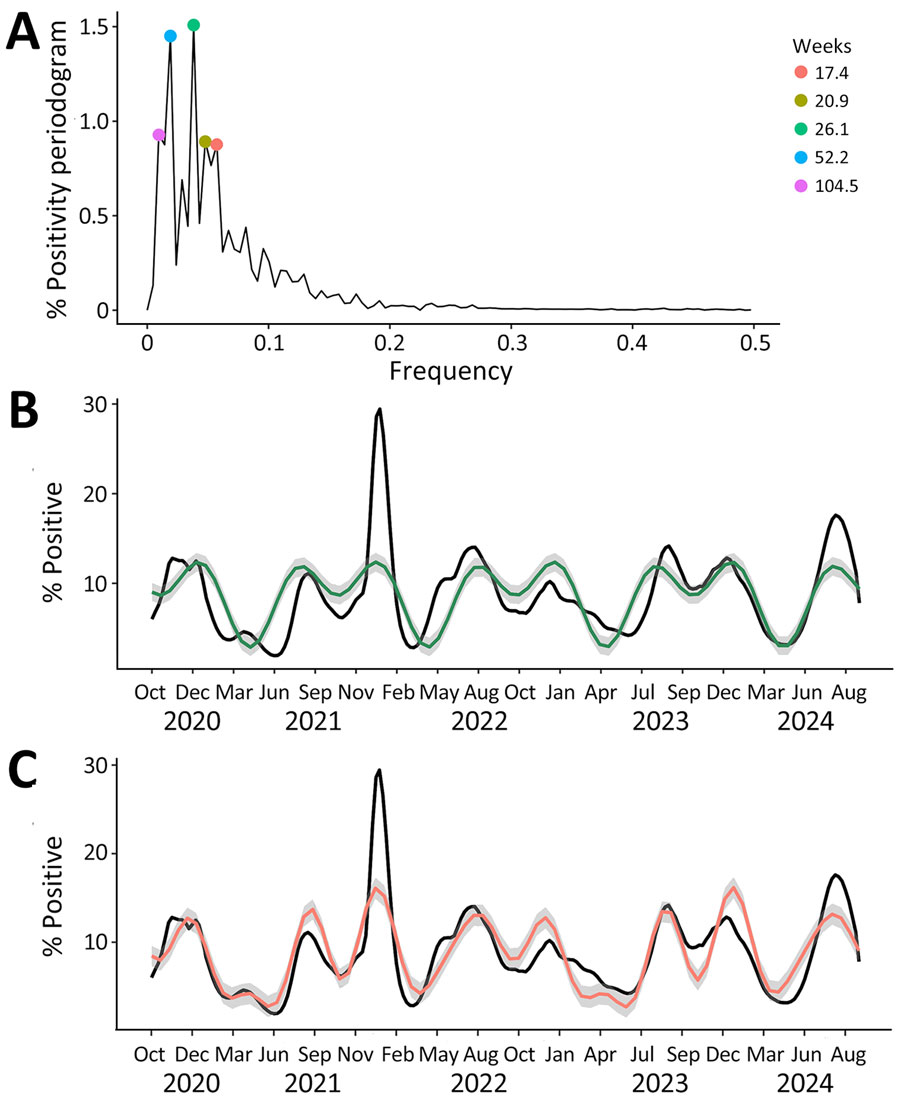Volume 31, Number 8—August 2025
Research
Estimated COVID-19 Periodicity and Correlation with SARS-CoV-2 Spike Protein S1 Antigenic Diversity, United States
Figure 2

Figure 2. National smoothed (3-week) percentages of positive SARS-CoV-2 tests reported to the National Respiratory and Enteric Surveillance System (NREVSS), United States, October 2020–September 2024. Data represent SARS-CoV-2 nucleic acid amplification test results, which include reverse transcription PCR tests from the NREVSS sentinel network of laboratories in the United States, including clinical, public health, and commercial laboratories. These data exclude antigen, antibody, and at-home test results. A) Periodogram, in which the height of each point indicates strength of the periodicity at the corresponding frequency. Dots indicate 5 dominant periodicities, at frequencies corresponding to surges every 104.5, 52.2, 26.1, 20.9, and 17.4 weeks. Weeks represent time intervals (i.e., weeks do not represent a year of calendar time in the context of this analysis). B) Fitted harmonic function using the 52.2- and 26.1-week periodicities determined by discrete Fourier transform (green line). C) Fitted harmonic function using the 104.5-, 52.2-, 26.1-, 20.9-, and 17.4-week periodicities determined by discrete Fourier transform (pink line).